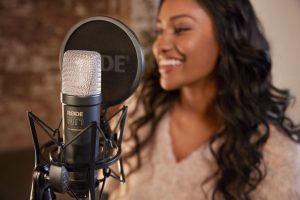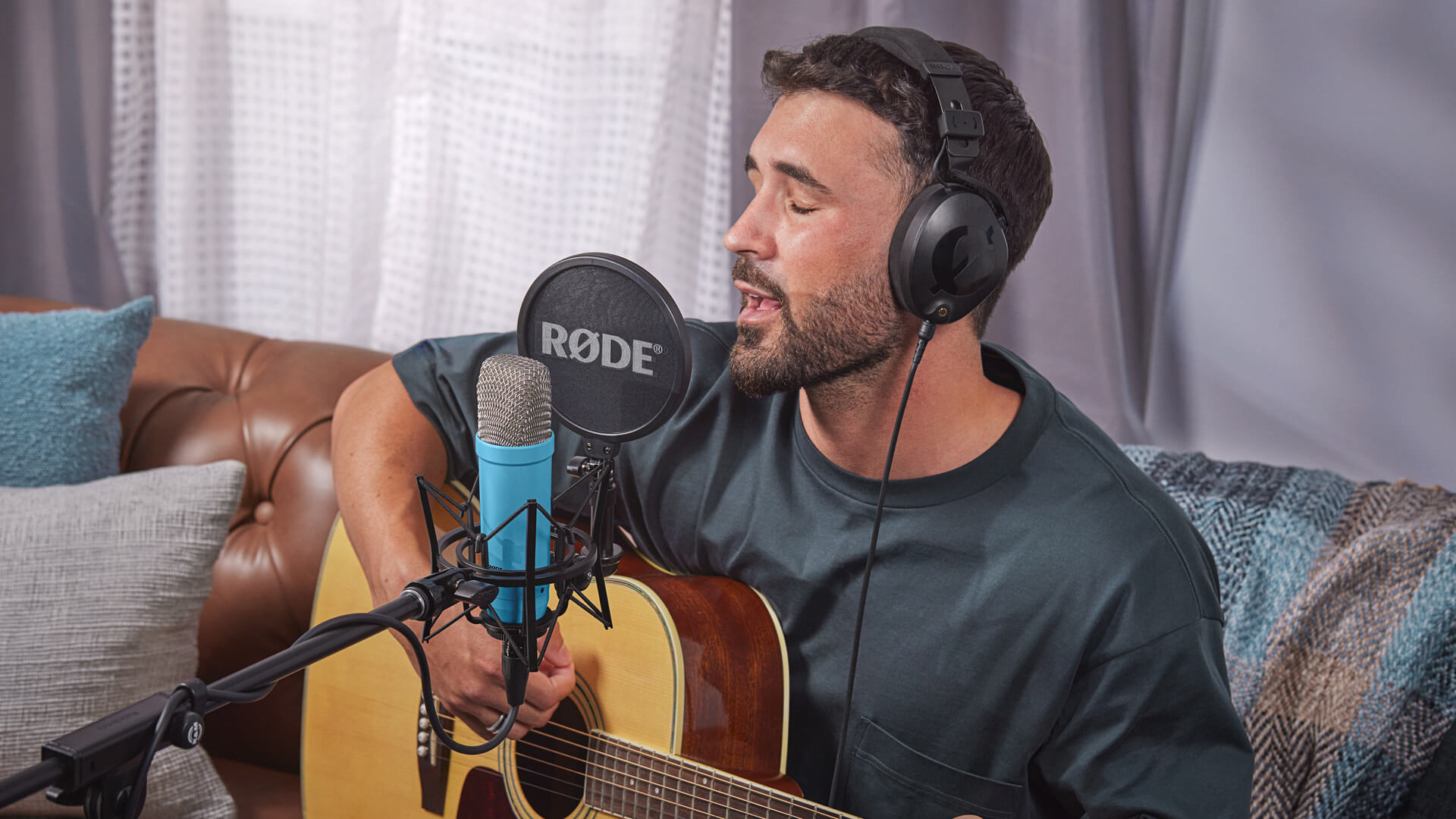How to better record voices from home?
You can record a great voice anywhere: your bedroom, the garage, in the living room… Wherever you want! In this article, we explain five tips that you can do to record almost professionally from home.
The best microphone for recording voices at home
Today, you can record almost professionally without the need for a room full of expensive equipment to achieve a great vocal sound, all you need is a good microphone.
The NT1 Signature Series is a versatile tool that every home studio should have. The NT1 Signature Series is a large-diaphragm condenser microphone that excels in a wide range of recording applications, particularly vocals, and also features an integrated anti-vibration shock mount and a pop filter to help you keep your recordings clean.
Condenser microphones are more sensitive, making them ideal for capturing subtle details of the voice. Additionally, larger diaphragms are more capable of capturing lower frequencies, which helps provide a better overall balance for the voice you are recording.
Once you have chosen the microphone, all you need is a simple audio interface, such as the AI-1, and a computer with a Digital Audio Workstation (DAW) where you can record and perform some basic processing.

The NT1 Signature Series studio condenser microphone delivers brilliant highs, detailed mids and rich, warm bass that excel at capturing powerful vocal performances.
Prepare a recording space at home
When it comes to recording at home, you may not always be able to choose the shape of the room or the materials of the walls and floor, but you can adapt a space to minimize unwanted noise.
First, try to choose a room with the least echo possible. To do this, you can clap or sing in the room and listen to how the sound bounces off the flat and hard surfaces. Once you have chosen a space, you can further reduce reflections by treating the space. For this, you can use any soft and dense material that you can place on the walls, floor, and ceiling. Carpets, blankets, curtains, or soft furniture in the room can make a big difference. If possible, try to choose a space that is as far away as possible from both exterior and interior noise.

The NT1 Signature Series shines in almost any recording application, from vocals, piano and acoustic guitar to drums, percussion and electric guitar.
Microphone technique
Most large-diaphragm condenser microphones, like the NT1 Signature Series, are side-address, which means the capsule (the membrane that captures your voice) is oriented to the side. These types of microphones typically have a cardioid pickup pattern, meaning they will capture the clearest signal in front of the capsule and not behind it. The NT1 series microphones feature a gold dot indicating the front of the microphone – make sure it is oriented towards you when recording.
Considering that large-diaphragm condensers are very sensitive, you should place the microphone at a distance of between 15 and 20 centimeters from your mouth to capture the best sound. Keep in mind that if you place it further away, you will pick up more room sound, making your voice sound distant and complicating post-processing.
If you place the microphone less than 15 cm from your mouth, you will start to notice the proximity effect – the closer you are, the more bass you introduce into the sound. This can be an advantage in shaping the tone of your vocals, but the added bass response can increase the risk of plosives, so experiment with what works best for you
A trick to avoid plosives is to sing slightly off-axis from the microphone, so that the excess air from certain words is directed to the side rather than directly at the capsule.

Large-diaphragm condenser microphones are typically side-address, with the gold dot usually indicating the direction in which RØDE microphones capture audio.
Basic processing
Once you have recorded your vocals in your DAW, you can use some basic processing tools to make your vocals sound even more professional. Let’s look at how to equalize (EQ), compress, and remove distortion.
Equalization helps shape the tone of the voice by allowing you to boost or cut certain frequencies. Generally, the human voice does not contain very low frequencies, so it can be useful to cut them with an equalizer to reduce muddiness. The low-frequency content in a vocal recording is likely to come from thumps, plosives, or background noise.
To give more clarity to the voice and make it stand out more in the mix, you can boost certain mid frequencies. If you notice that certain mid frequencies are already quite high, be careful not to boost them while increasing other frequencies around them. Boosting high frequencies with a high-shelf equalization is a good trick to give your performance a little more “air” and brightness.
Compression helps maintain consistent vocal levels by automatically reducing high signals and increasing low ones in a recording. In general, this gives your vocals a smoother and more professional sound that will blend better in the mix. To start, adjust the compressor threshold until you see a “gain reduction”; that way you’ll know the compressor is working.
A “de-esser”, as its name suggests, is designed to reduce harsh sibilant sounds like “s” and “sh” that can sometimes be quite prominent in vocal recordings. It does this using a smart combination of EQ and compression, but most de-esser effects are quite easy to handle.
These basic processing steps are the foundation of a clean and professionally sounding vocal track. You don’t need a lot of expensive plug-ins to get a good sound: the stock plug-ins that come with your DAW will serve you perfectly.
Creative effects
After performing some basic processing to clean up your vocals, adding subtle effects can take your recording to the next level. Here are some commonly used effects on vocals: Reverb, Delay, and Double Tracking.
Reverb adds space and depth to vocals, creating an ambiance that can make the singer seem like they are in a small room, a large hall, or an infinite cosmic void.
Delay is an effect that adds an “echo” or repetition of vocals at specific intervals (usually synchronized with the song’s tempo) to fill in the spaces between phrases and add richness and texture to the overall vocal sound.
Double tracking is an effect that can give your vocals a fuller, wider, and more dynamic sound by utilizing the stereo field. One way to achieve this effect is by recording multiple takes of your vocal performance and layering them in your DAW, panning each take more to the left or right.
With the right equipment, recording space, technique, and some basic processing and effects, you can start your studio-quality recordings from the comfort of your home.
Sepúlveda 134 / Barcelona / Tel.: 930 186 876
Ardemans 9 / Madrid / Tel.: 910 88 93 30


